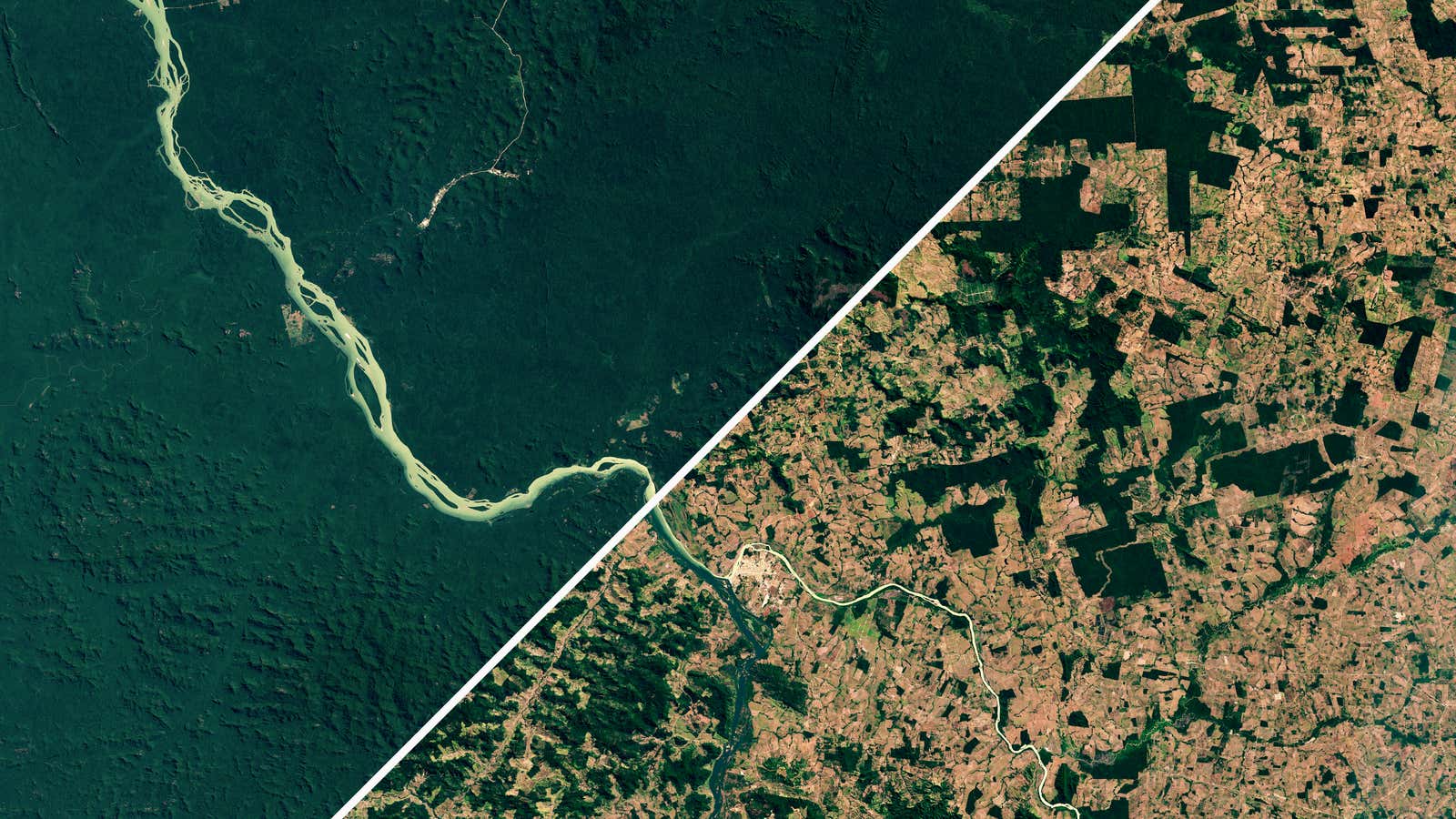Jair Bolsonaro, the president-elect of Brazil, might be the biggest single-person threat the Amazon rainforest has seen in a generation. He has likened indigenous reserves in the Amazon to “chickenpox” on the land, and promised that “there won’t be a square centimeter demarcated as an indigenous reserve” under his leadership.
Tropical rainforests are critical storage sites for carbon dioxide, keeping the greenhouse gas locked away in soils and trees. The Amazon is the world’s largest tropical rainforest, making its protection critical to preventing runaway climate change.
It is also home to hundreds of indigenous tribes that have lived there for thousands of years, and, in many cases, already struggle to defend their land from invasion by illegal loggers and miners. Without strong governmental support to help defend against invasion, and in light of recent major funding cuts to the Brazilian indigenous affairs agency, the reserve system is already vulnerable.
But despite flaws, indigenous reserves are often the only bulwark against deforestation in the Brazilian Amazon. Research has shown that indigenous management practices are the best approach to maintaining the health of tropical rainforests globally. And in the video below, satellite imagery confirms the research—from 1984 to 2018, deforestation crept all the way up to and against the exact contours of the Xingu Indigenous Park in Brazil:
Where others see crucial ecosystems, Bolsonaro sees potential for economic gain by opening those reserves to industry. “Where there is indigenous land,” he has said, “there is wealth underneath it.”
The current deforestation rate in Brazil is roughly 2,700 sq miles (7,000 sq km) a year. To comply with its Paris Accord obligations, the country would need to cut that by two thirds, according to National Geographic.
Rondônia, a state in western Brazil on the Bolivian border, has become one of the most deforested parts of the Amazon over the last 30 years. Protected areas haven’t been completely spared, but the pace of deforestation is dramatically reduced within them:
The Amazon is dotted with 462 indigenous reserves, but very few—just 8% of that count—have been formally demarcated. Just last month, the Brazilian government recognized an 8,000 sq mile (2.1 million hectare) reserve called the Kaxuyana-Tunayana, on the border of Pará and Amazonas state, for demarcation. At least 18 different indigenous groups live within that plot, Mongabay reports. With its demarcation in limbo, it stands to reason that the Kaxuyana-Tunayana and others like it may be among the lands at risk from the Bolsonaro presidency.
Bolsonaro has said he plans to do away with the Brazilian environment ministry, fusing it with the country’s agricultural ministry. He has also proposed a 541 mile (870 km) paved highway through protected forest, according to Scientific American.
As Wired notes, to fulfill his aspirations, Bolsonaro would need to amend Brazil’s Forest Code, a national law that states that private landowners can only deforest 20% of the land they own in the Amazon, and must leave the remaining 80% covered by native vegetation.
But whatever the eventual outcome of Bolsonaro’s efforts to maneuver through the legal process required to make these changes, his electoral victory has reportedly emboldened loggers, miners, and poachers to encroach on indigenous lands, leaving indigenous communities vulnerable to attack and their land vulnerable to exploitation.
“Many brothers tell us there are invasions, people entering the territories with no regard for the rules and no fear of the authorities,” Beto Marubo, a native leader from the Javari Valley Indigenous Land in Brazil’s far-western borderlands, told National Geographic.
And as for what happens to unprotected land under Bolsonaro’s vision of Brazil? The precedent is clear:
